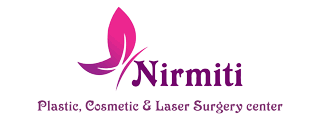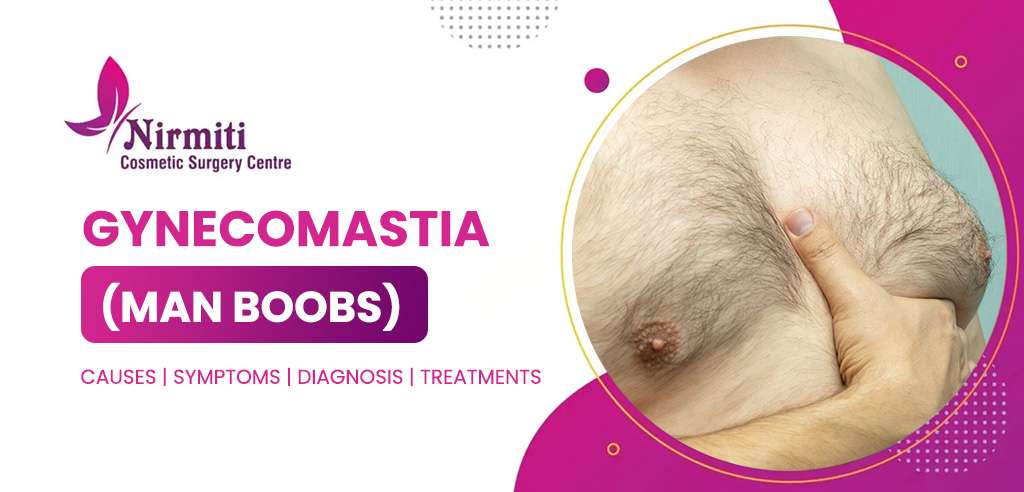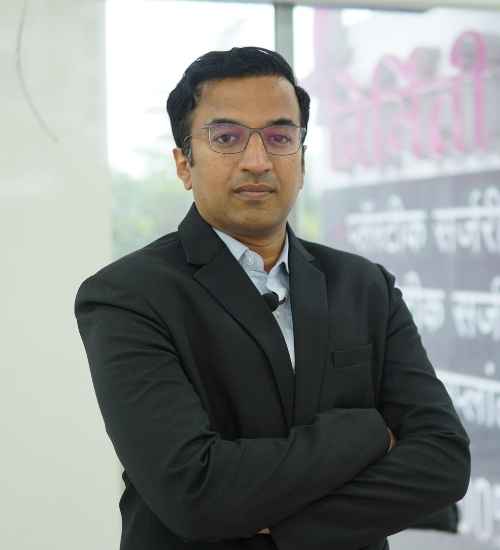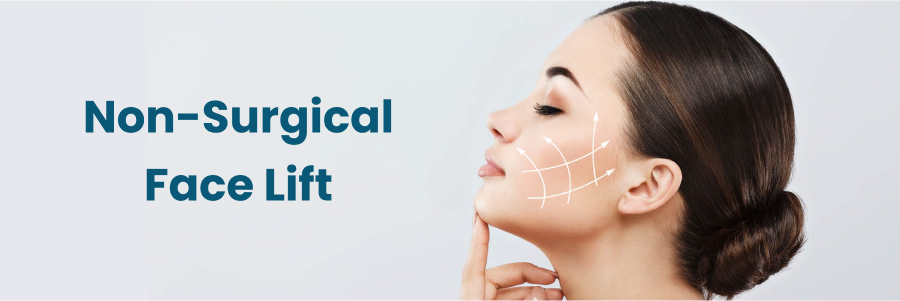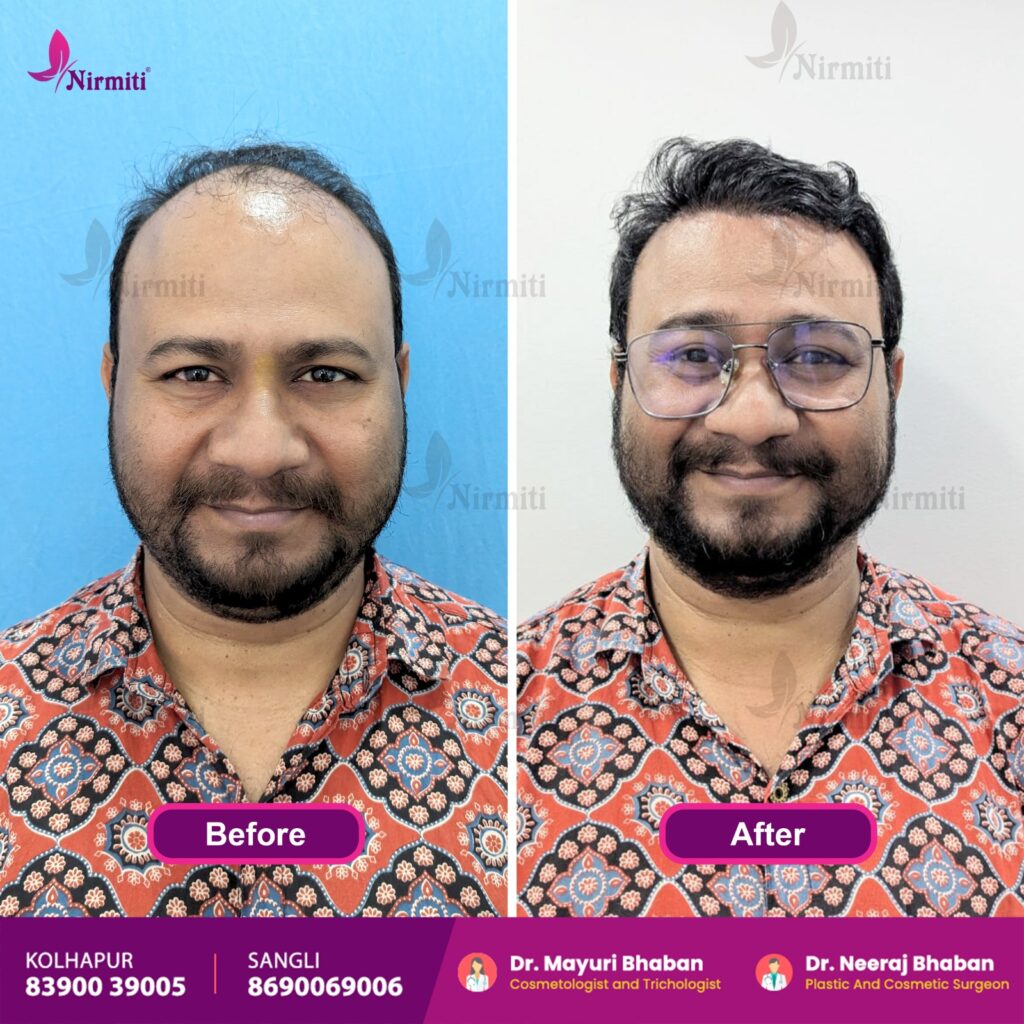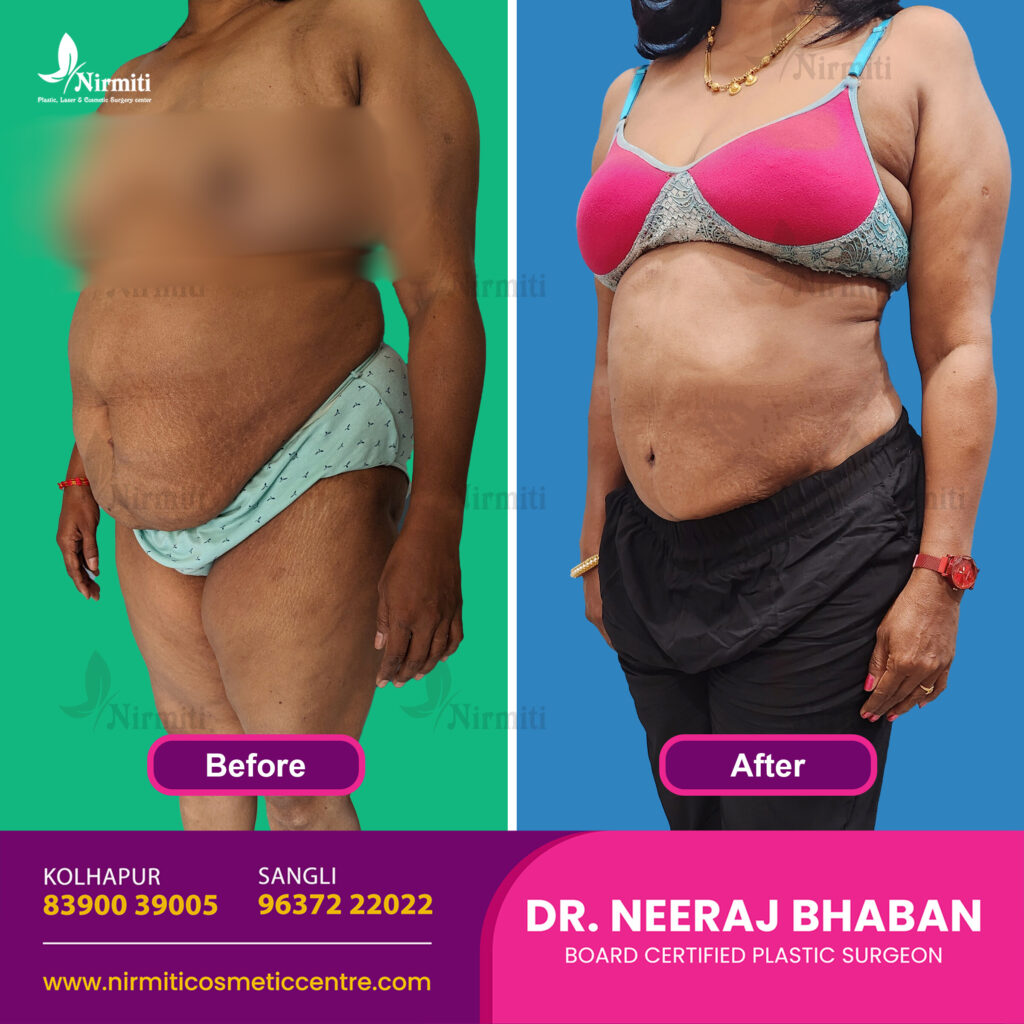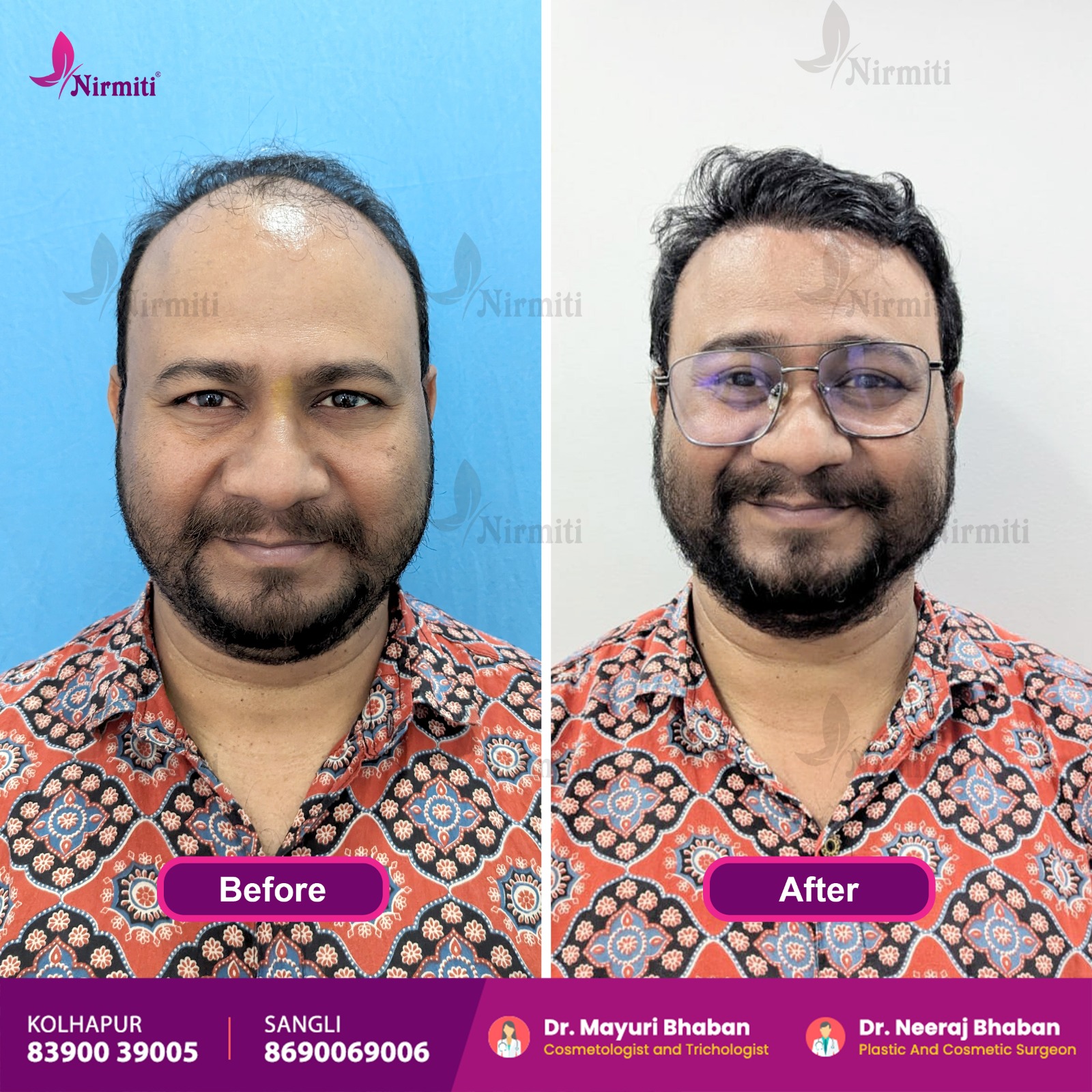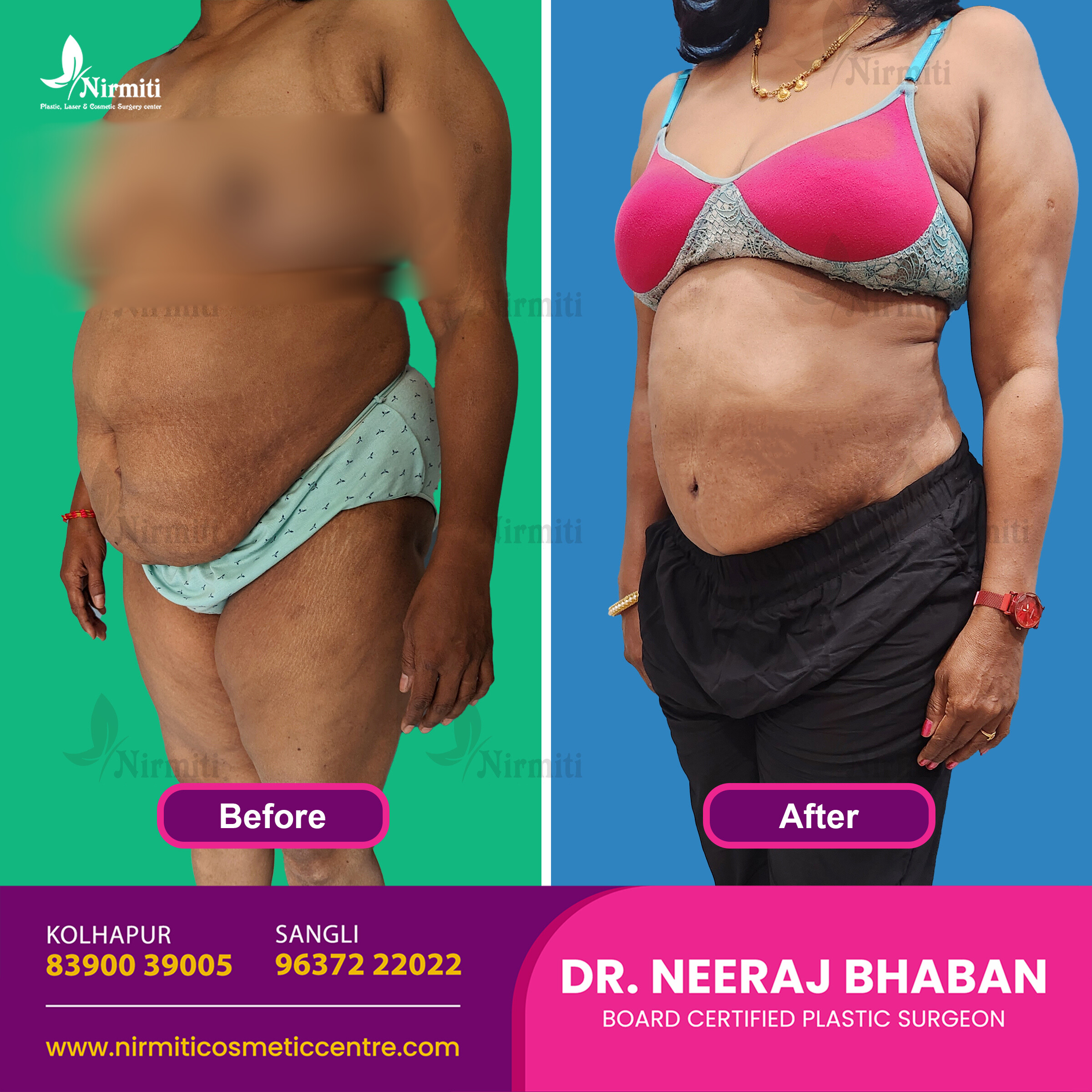Gynecomastia (Man-Boobs) – Causes, Symptoms, Diagnosis & Treatments
Gynecomastia
Gynecomastia is a common prevalent condition in which the male breasts are enlarged due imbalance of hormones – estrogen and testosterone. It happens due to the expansion of glandular tissue or fat situated in the breast of a male.
It can affect either only one breast (Unilateral Gynecomastia) or both of them (Bilateral Gynecomastia).
In This Article:
Anatomy – How does Gynecomastia occur in Men?
Let’s see the working of Estrogen and Testosterone Hormones and how they play their parts in the resulting condition called Gynecomastia.
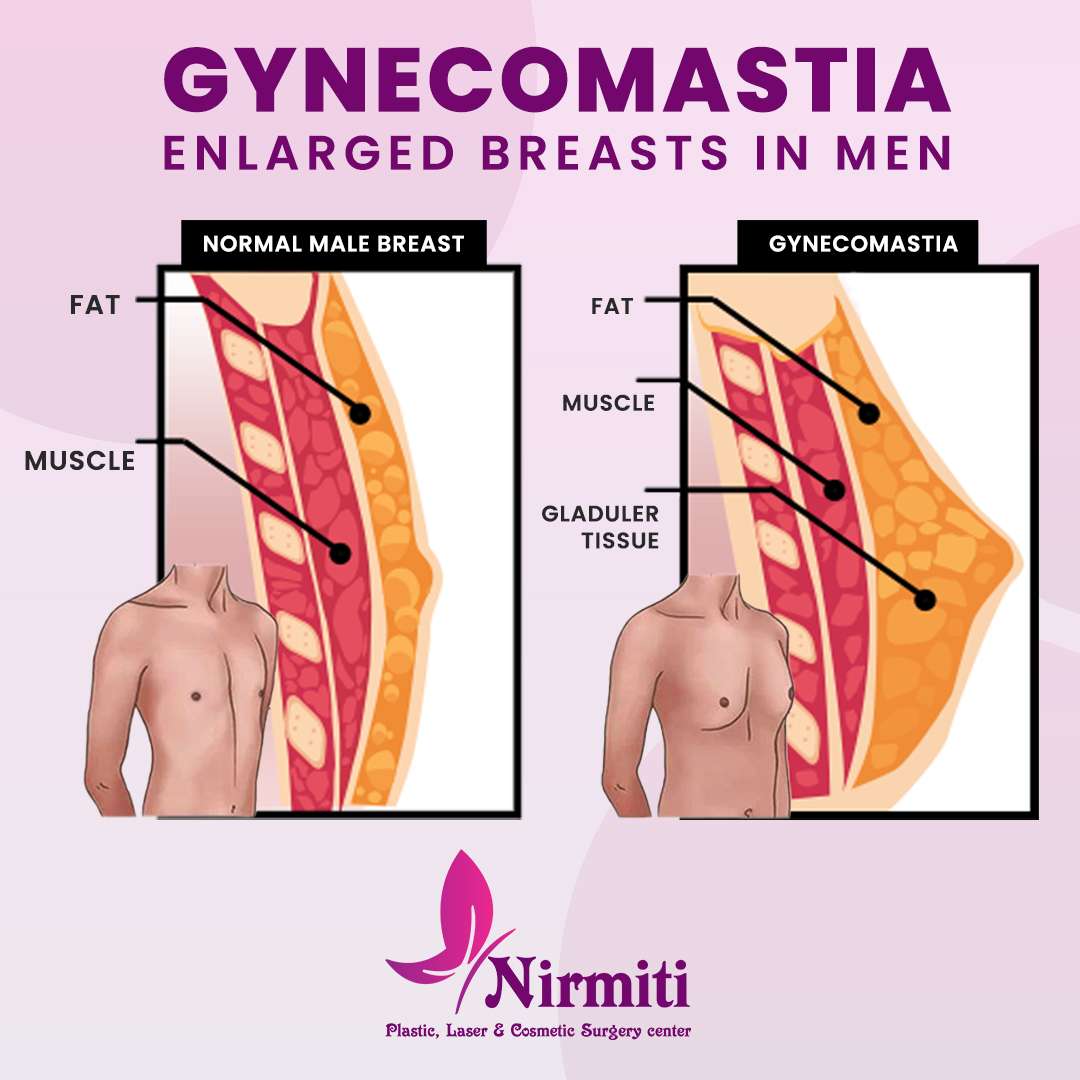
Estrogen? This Hormone is responsible for breast development and is found more in females. Estrogen Hormone increases glandular tissue of the breast area (refer to image) thus resulting in the overall increased size of the breast.
Testosterone? This hormone regulates sex drive, bone mass, fat distribution, muscle mass, strength, production of RBCs, and sperms.
If a male’s body produces more estrogen and low testosterone then these men experience enlarged breasts which we call Gynecomastia.
You may also see enlarged breasts (Gynecomastia) in Obese males. This occurs due to an increase in fat deposition and not by expansion of the glandular tissue.
Prevalence – Is Gynecomastia Very Common?
Gynecomastia is a very commonly occurring condition among Males. Boys or Men tend to get anxious or depressed about it and they try to hide it. Most adult men who have gynecomastia report no symptoms (Asymptomatic). Asymptomatic Gynecomastia is found in a large number of neonates (a baby who is 4 weeks old or younger)
Gynecomastia found in newborns is due to the estrogen hormone passed by the mother to the baby. It can last up to 2 years and then fade away gradually.
Many boys in puberty or teenage also experience gynecomastia, however in most cases it is resolved within some months.
Prevalence of Asymptomatic Gynecomastia as per age group
| Age Group | Neonates | Adolescents | Old Adults |
|---|---|---|---|
| Prevalence | 60%-90% | 50%-60% | 70% |
The occurrence of Symptomatic Gynecomastia is comparatively less.
According to Researchgate and their statistics, the following are the present number of Gynecomastia cases as per the age group.
Among the age group between 6-8 years old, 32% of them experience Gynecomastia.
Among the age group between 9-11 years old, 25% of them experience Gynecomastia.
Among the age group between 12-14 years old, 45% of the total Men population experience Gynecomastia.
Among the aged 15 and above years old, 38% of the population experience Gynecomastia.
| Sr. No. | Age Group | Occurrence |
|---|---|---|
| 1) | 6-8 | 32% |
| 2) | 9-11 | 25% |
| 3) | 12-14 | 45% |
| 4) | 15 and above | 38% |
Causes of Gynecomastia
In newborns (Maternal Transfer)
During pregnancy, the estrogen levels are high in the mother, so some of it can pass to the fetus (baby).
In preteen boys
Breast Buds are common in puberty.
In teen Boys
Teen boys may experience temporary gynecomastia due to changes in Hormones.
Gynecomastia due to diseases
There are some diseases or health conditions which may cause Gynecomastia
- Klinefelter syndrome
- Hyperthyroidism
- Hypogonadism
- Tumors in the pituitary gland or testicles
- Adrenal gland disorders
- Chronic liver disease
- Renal failure
- Malnutrition
- Testicular tumors
- Lung cancer
- Hodgkin’s lymphoma
- Kidney failure
- AIDS
Gynecomastia due to some Medications:
Below are some medications which can be responsible for Gynecomastia
- Anabolic steroids
- Anti-androgens such as flutamide, spironolactone, and finasteride
- Chemotherapy drugs such as methotrexate and vincristine
- Antidepressants such as selective serotonin reuptake inhibitors (SSRIs) and tricyclic antidepressants (TCAs)
- Calcium channel blockers such as amlodipine and verapamil
- Antibiotics such as metronidazole and isoniazid
- Proton pump inhibitors (PPIs) such as omeprazole and pantoprazole
Other factors of Lifestyle causing Gynecomastia
- Excessive alcohol consumption
- Drug abuse
- Obesity
- Unhealthy diet
- Lack of exercise
- Exposure to environmental toxins such as pesticides and herbicides
Gynecomastia is classified into three grades depending on the amount of breast enlargement, skin excess, and ptosis (drooping of the upper eyelid ). The treatment for each Grade differs depending on the amount of skin excess and ptosis.
Diagnosis of Gynecomastia
Physical Tests to Diagnose Gynecomastia
- Breast Examination
- Palpation Test
- Nipple Discharge Test
- Visual Inspection
Blood tests to Diagnose Gynecomastia
- Hormone tests
- Liver function tests
- Kidney function tests
- Thyroid function tests
- Tumor markers
Radio imaging test to Diagnose Gynecomastia
- Mammogram
- Ultrasound
- Magnetic resonance imaging (MRI)
Symptoms of Gynecomastia
- Breast tenderness or pain
- Swelling or lumps in the breast area
- Nipple Sensitivity against rubbing of clothes
- Nipple discharge (rare)
- Changes in the shape or appearance of the breasts
- Psychological distress or embarrassment related to breast development
Treatments of Gynecomastia
Gynecomastia Surgery involves a plastic surgeon creating a flatter chest with enhanced pectoral contours by removing breast tissue, fat, and skin from the area.
Gynecomastia can be treated in the following ways:
1. Liposuction:
Liposuction involves the removal of excess fat from the breast area. This procedure is typically performed under general anesthesia or local anesthesia with sedation.
In this we make small incisions in the breast area, then insert a cannula / Liposaver which sucks out excess fat from the breast area. This cannula / Liposaver is attached to a vacuum.
In our Gynecomastia treatment, we use Liposaver which is known to perform High Definition liposuction. It uses Ultrasonic energy resulting in fat removal and nice contracted skin. You won’t find any marks or scars after the treatment.
We use Power-assisted (PAL) and ultrasound-assisted liposuction (UAL) technologies which resolve most of the cases by Liposuction.
2. Excision:
Excision techniques are recommended where glandular breast tissue or excess skin must be removed to correct gynecomastia. Excision also is necessary if the areola will be reduced or the nipple will be repositioned to a more natural male contour. Incision patterns vary depending on the specific conditions and surgical preference.
3. Combination of Both
In some cases, we may use a combination of liposuction and excision to remove as much of the unwanted tissue and fat as possible.
Sometimes the heavy breast tissue and sagging skin pulling the nipple downward can make a very enlarged appearance.
Here, gynecomastia surgery may also involve resizing and repositioning the nipple. This procedure is more invasive and will require additional healing time.
4. Medications:
If the underlying cause of gynecomastia is related to hormonal imbalances, and if it can be treated by some medications, we generally suggest our patients go for prescribed medications to reduce breast tissue growth.
This avoids the risk and complications of undergoing surgery.
Conclusion
Gynecomastia is a very common condition among Men. There are many causes of Gynecomastia. However, no need to stress about it as it can be handled by various treatments. We at Nirmiti Cosmetic Center use the latest technologies like Power assisted (PAL) and Ultrasound-assisted Liposuction for treating Gynecomastia. The use of such tools makes the surgery smooth, and sleek. It gives the person a new flaunty look for his chest without any scars left on the treated area.

